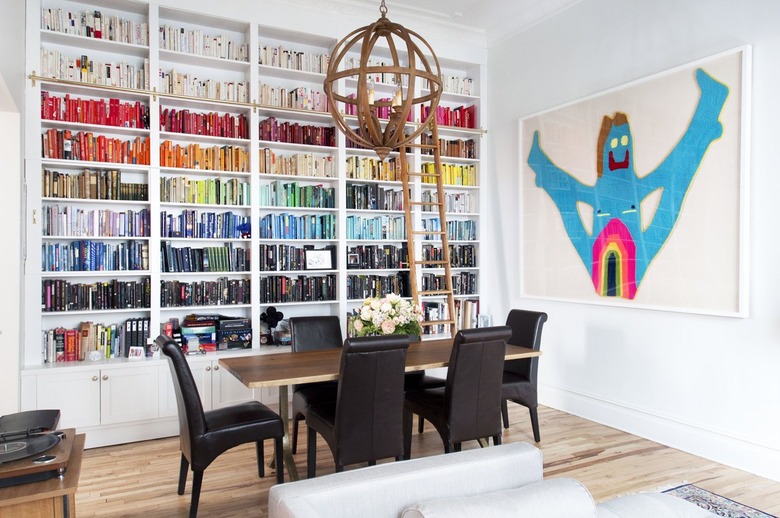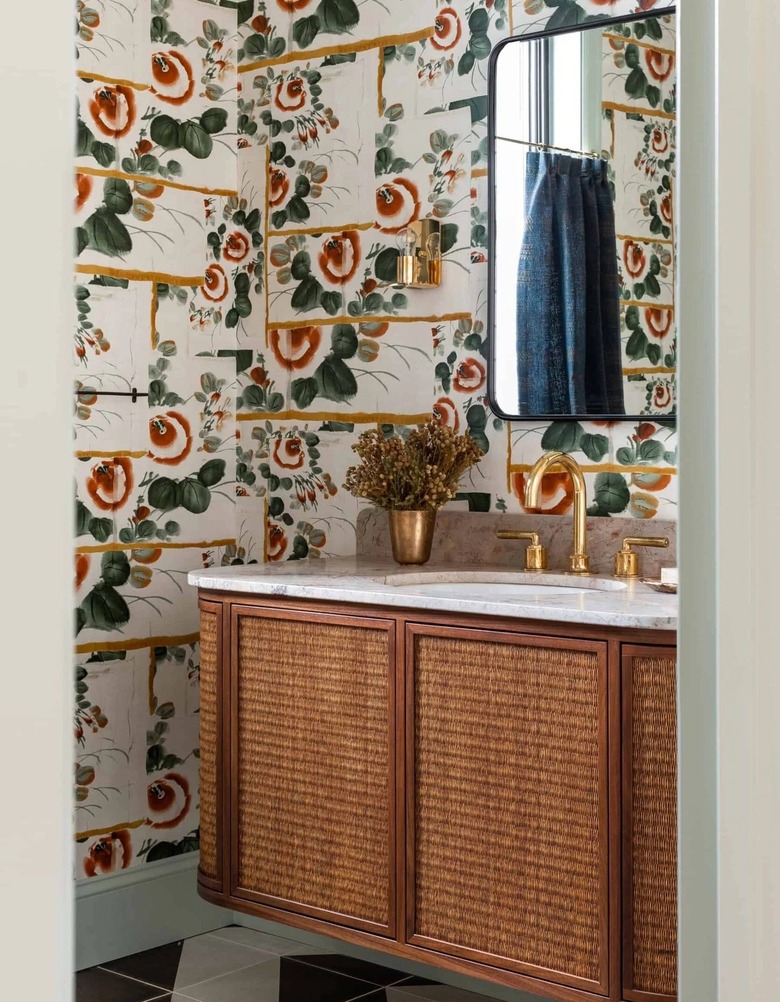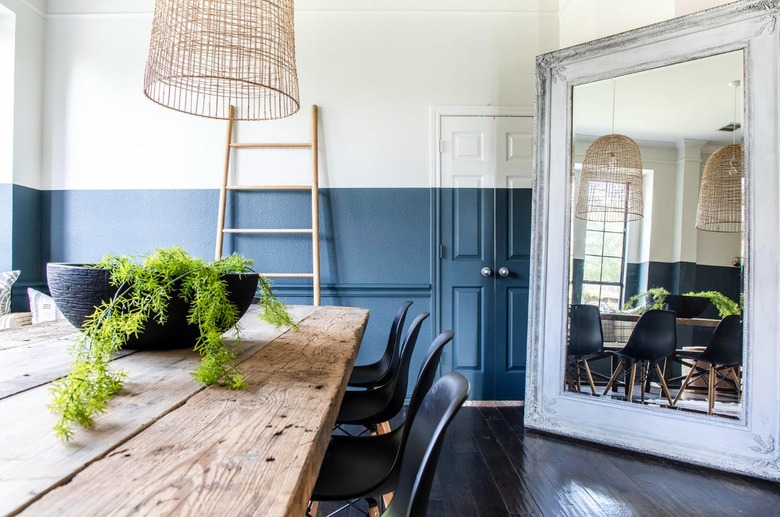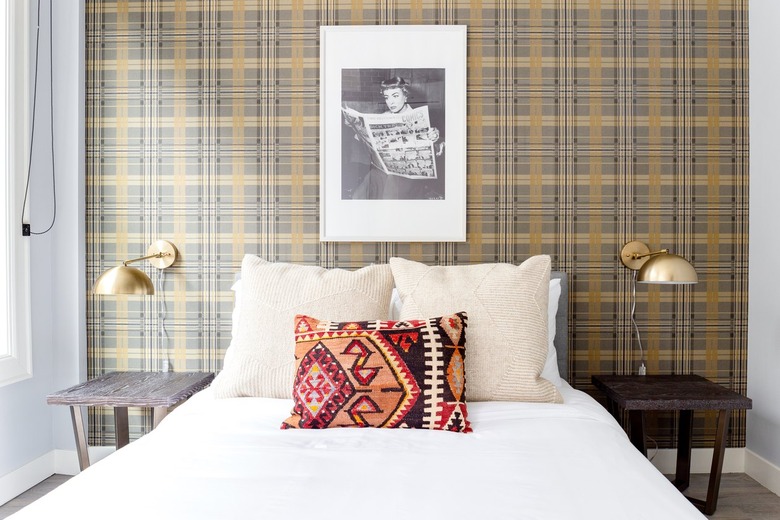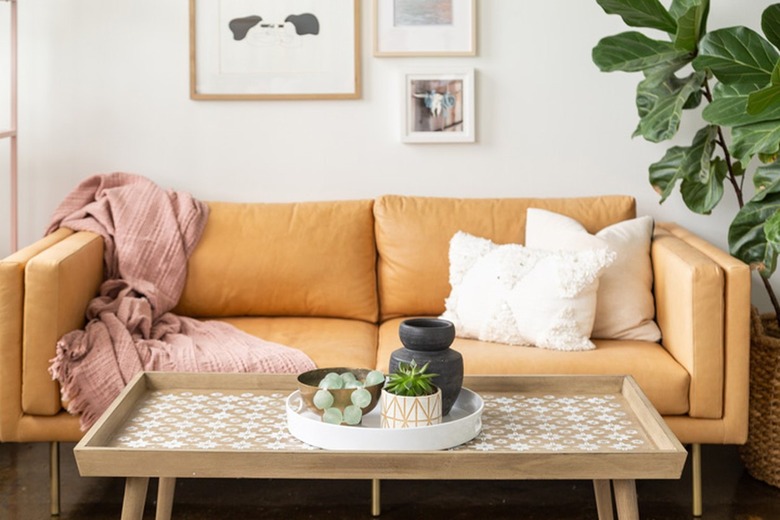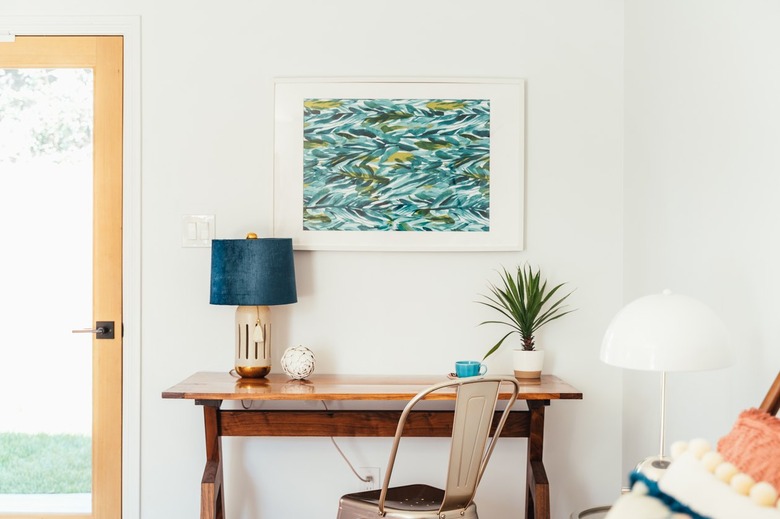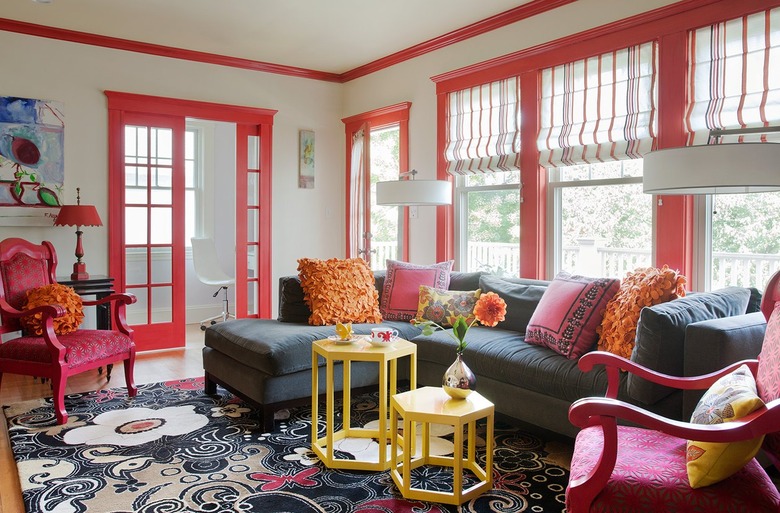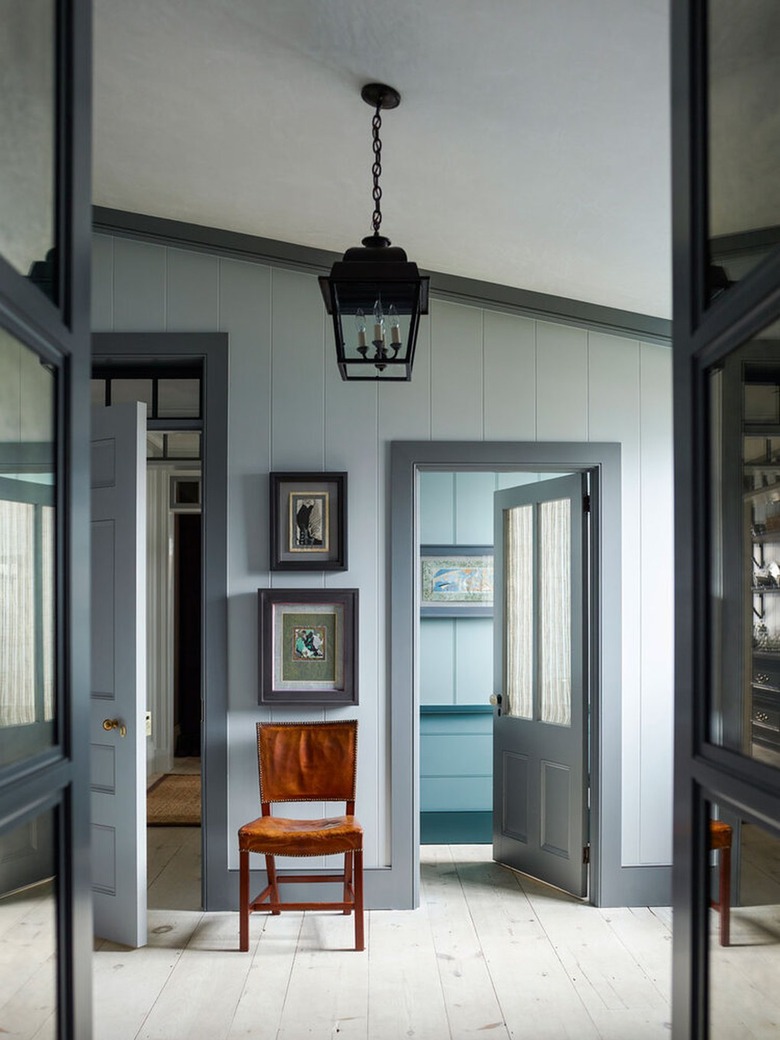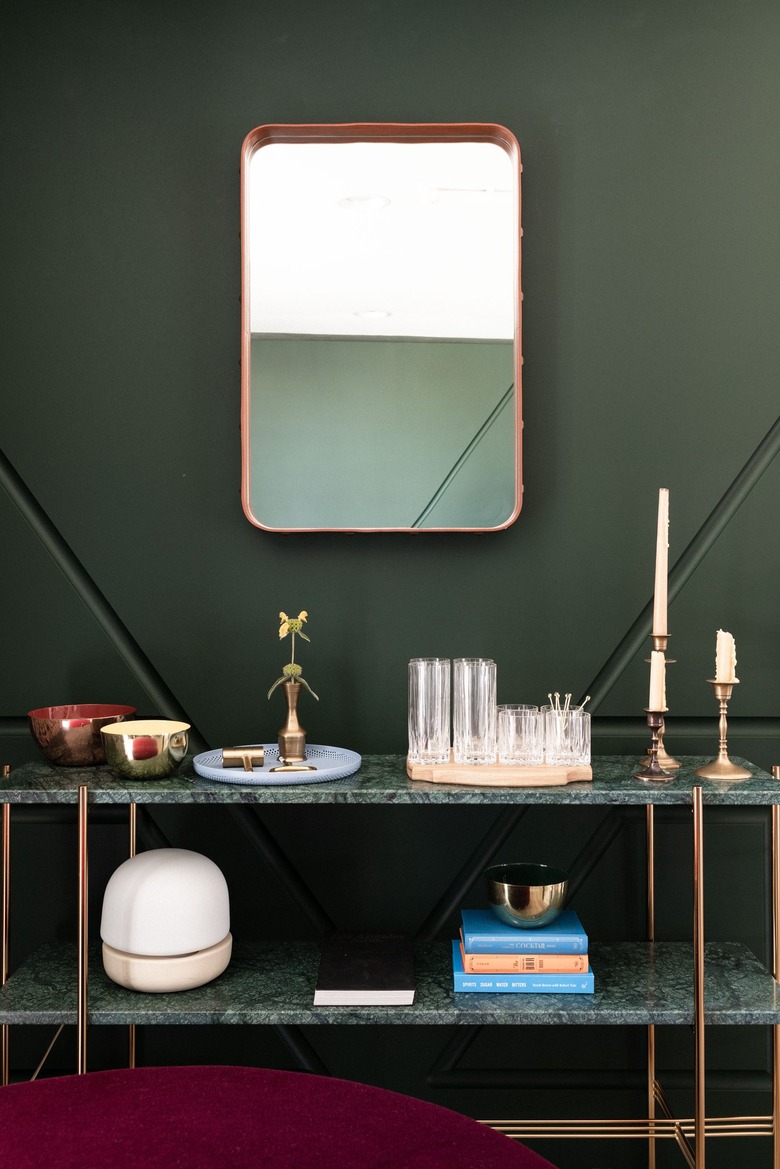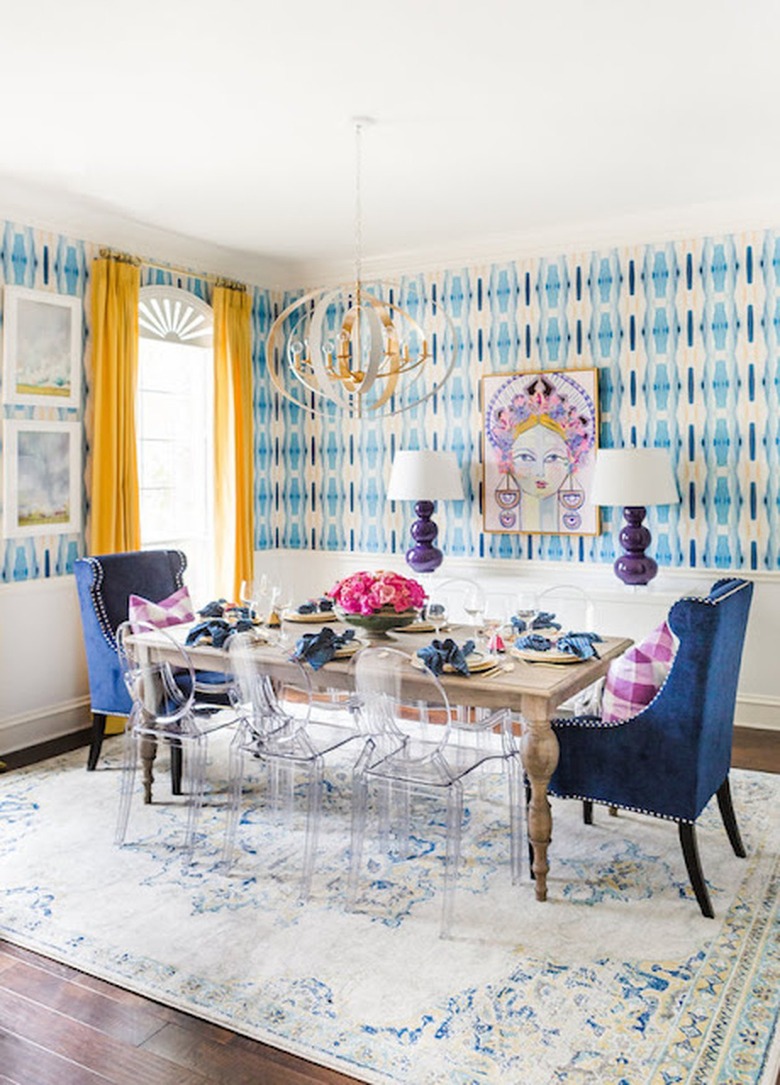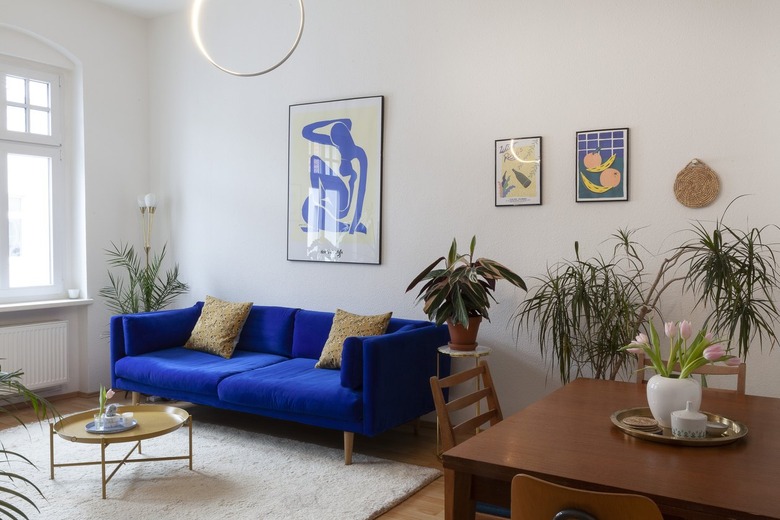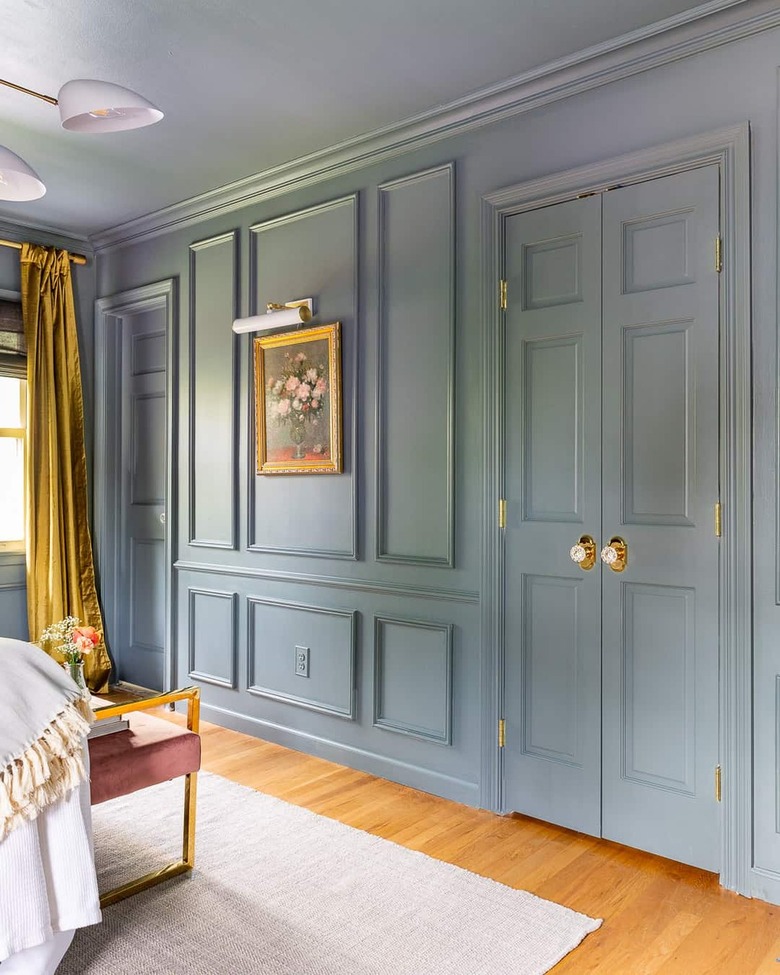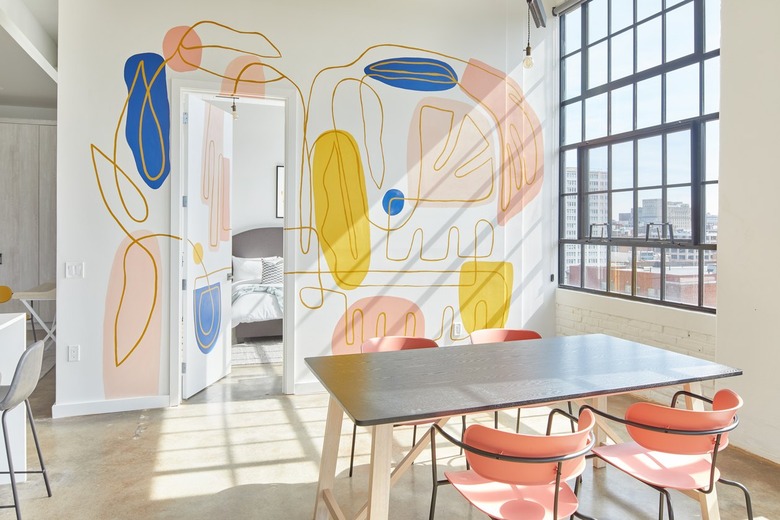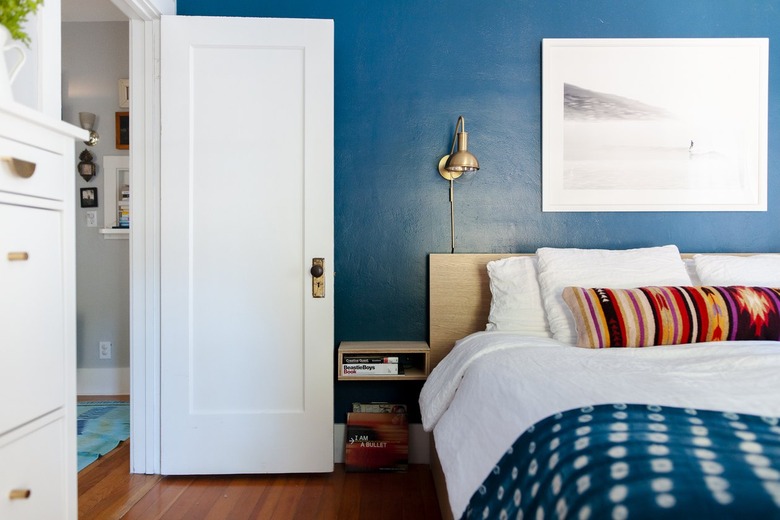14 Tips On Decorating With Color, According To The Pros
Bringing color into your home can be intimidating. After all, by adding a new hue you can completely change the look and feel of any room. If you want your space to feel light, bright, and airy, a cool color palette will do the trick. Or, if you've been dreaming of a setup bursting with moody drama, a darker combo is probably more your speed. The trick is to select shades that show off your unique personality but also complement each other.
"I think that color for me has everything to do with personality and what you're looking for," says Malka Helft, founder of Think Chic Interiors. "So if they want a calm retreat feel in a bedroom, the color should be light. If I have a client [with a dramatic sense of style], I could do sage and add some burnt orange and gold to give that whole '70s vibe."
Typically, decorating ideas with color involve building a palette around a particular hue that strikes your fancy. With the help of a color wheel, you can easily determine what shades will be complementary. There's also the 60-30-10 Rule, which states that 60% of a room should be a dominant color, 30% should be a secondary color, and the last 10% should be an accent color. But things aren't always so black and white, and Helft recommends going higher than 60%, especially if you have a lot of wall space to play with.
Before you begin, scroll on for a few tips and tricks from the pros that will help you get started on the right foot.
14 Clever Ways to Decorate With Color
1. Experiment with color in a small room.
Helft recommends testing a particular color in a smaller space, such as the powder room, "because it's a small room ... that everyone visits at some point." It might feel a little less scary to try something daring in a tiny space as opposed to the living room. For instance, interior designer Heidi Caillier covered the walls of this cozy bath with a dynamic wallpaper pattern, showcasing shades of red and green. Since the graphic print is limited to this room, it really makes quite an impression without affecting the rest of the house. You can do something similar in a mudroom, as well.
2. Play around with color blocking.
When it comes to decorating with color, a surefire way to show off your personality and to get a little creative is with color blocking. This dining room by Urbanology Designs shows us how it's done with the help of navy blue and crisp white paint.
3. Mix and match patterns.
One way to add color and visual interest is by mixing different patterns. We love the plaid accent wall and eye-catching throw pillow used in this cozy bedroom. And the beauty of throw pillows is that they can be easily swapped out. "Pillows will have those colors you want to experiment with," Helft says. "They're easy [and] you can switch them out if you don't like them or you're bored of them."
4. Use neutral colors intentionally.
According to Ginger Curtis, owner and principal designer at Urbanology Designs, the best way to start is to consider your current foundation — if that foundation is neutral, the sky is the limit. Take this living room: The plain white walls allow the mustard yellow leather sofa to take center stage. "You can add different shades of neutrals and add fun pops of colors," she says."Just add the color in an international way."
5. Color code your library.
If you're nervous about going from a stark white wall to a full-blown red wall, try dipping your toes in by getting creative with existing pieces of home decor. Here, a color-coded wall of books adds the perfect pop to this all-white dining room. Not to mention, it will undoubtedly be quite the conversation piece during dinner parties.
6. Bring in color with wall art.
According to Helft, another simple way to add some color to your space is to incorporate a few bright pieces of artwork into the room. You can also get the job done with one large piece, too. "That is [what will] bring that wow [factor] to [your] space," she says.
7. Don't forget the trim.
An often overlooked way to add color is to paint the trim. Aside from pillows, area rugs, and artwork, it's another way to add an eye-catching pop without having to take the time to paint an entire wall. In this living room setup by Heidi Pribell, the coral-colored trim punctuates the space and acts as the perfect finishing touch to the eclectic scheme. "Color can go in so many places and you should give yourself permission to think outside the box," Curtis says.
8. Consider a tonal approach.
Oftentimes people select opposing shades on the color wheel to create some contrast. However, both Helft and Curtis recommend a monochromatic look. Start with a color you love and then add in a lighter shade in the same color family. For example, in this dreamy setup by S.R. Gambrel light gray walls make a picture-perfect backdrop for the darker gray doors and trim.
9. Go with a bold color.
To add some drama, opt for a darker hue as showcased in this swanky vignette. Moody color schemes tend to be a little mysterious, but they actually don't make rooms small or intimidating, according to Helft. Plus, they have a grounding effect and work beautifully with metal finishes like brass.
10. Showcase an eye-catching wallpaper pattern.
If you're lucky enough to have a separate dining room, why not follow the lead of Curated Interior and jazz it up with a splashy wallpaper pattern? You might just find yourself throwing more dinner parties because of it. "Living rooms you're in every single day, but dining rooms are a place you go in on occasion," says Curtis. "You are interacting with it on specific occasions and it feels nice."
11. Allow your furniture upholstery to do the talking.
Paint and wallpaper are popular go-tos when it comes to decorating with color. However, investing in a vibrant piece of furniture is definitely worth considering. In this living room, the royal blue sofa is unequivocally the star of the show and requires little else in the way of decor.
12. Paint the ceiling, doors, trim, and walls the same color.
Something Curtis loves to do is cover the walls, ceiling, and trim in the same paint color. "In a small room that may sound counterintuitive, but when you paint every single thing in the room the same color, the room doesn't appear as small," she says. "You don't see these boundaries and perimeter." This could work well in a study, a library, or even a bedroom as demonstrated by A Glass of Bovino.
13. Opt for a vibrant wall mural.
A fun trend to experiment with is hand painting lines and squiggles on your walls for a colorful mural. You can also get the same look with wall decals or even wallpaper. "Always make sure there are elements there that pull out the color so it's continuous," says Helft. We love how the pastel pink chairs tie in the abstract work of art, resulting in a cohesive design.
14. Factor in color theory.
In regards to the 60-30-10 Rule mentioned earlier, one of the colors needs to be more substantial, mainly because you're going to have it on your walls. However, Helft recommends going with a larger percentage of additional color to continue bringing life into the space. "You're going to need more color, otherwise it's going to look boring," she says.
When it comes to narrowing down your color scheme, Curtis says: "It's really what matches your personality ... It's really what you gravitate towards ... From there, you can find those [complementary] colors to make a bigger statement."
For those who don't have a favorite color in mind, try sticking with color theory to get the look and feel you want. Blues and other light hues can make your space feel more relaxed, whereas reds and oranges evoke energy and excitement. White, on the other hand, is a blank slate for new beginnings and you can slowly incorporate an additional pop here and there.
